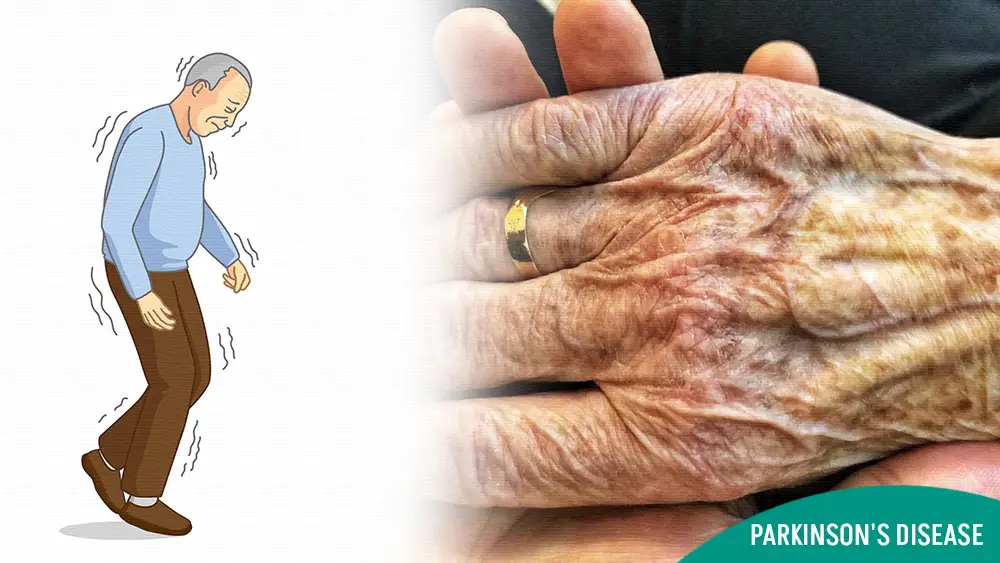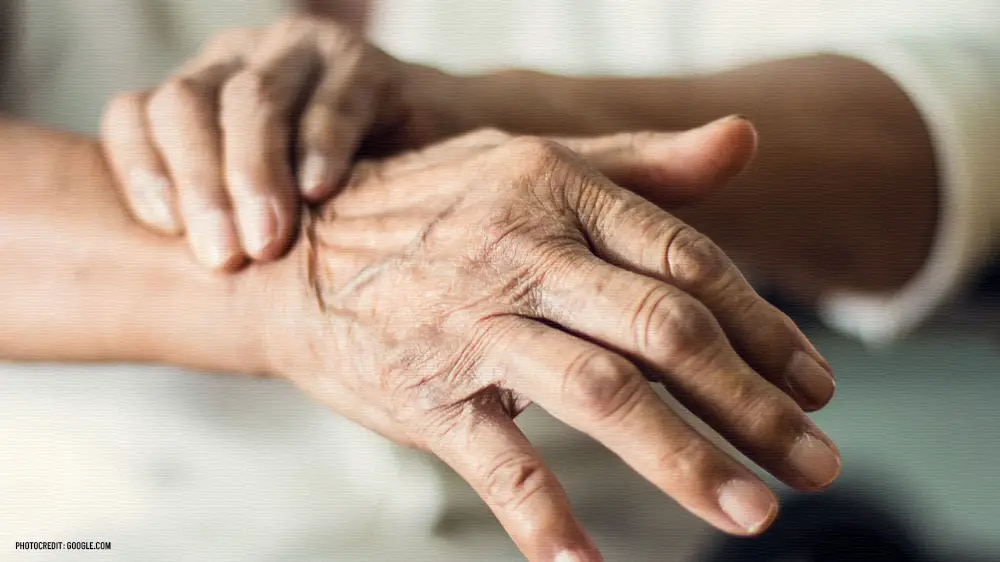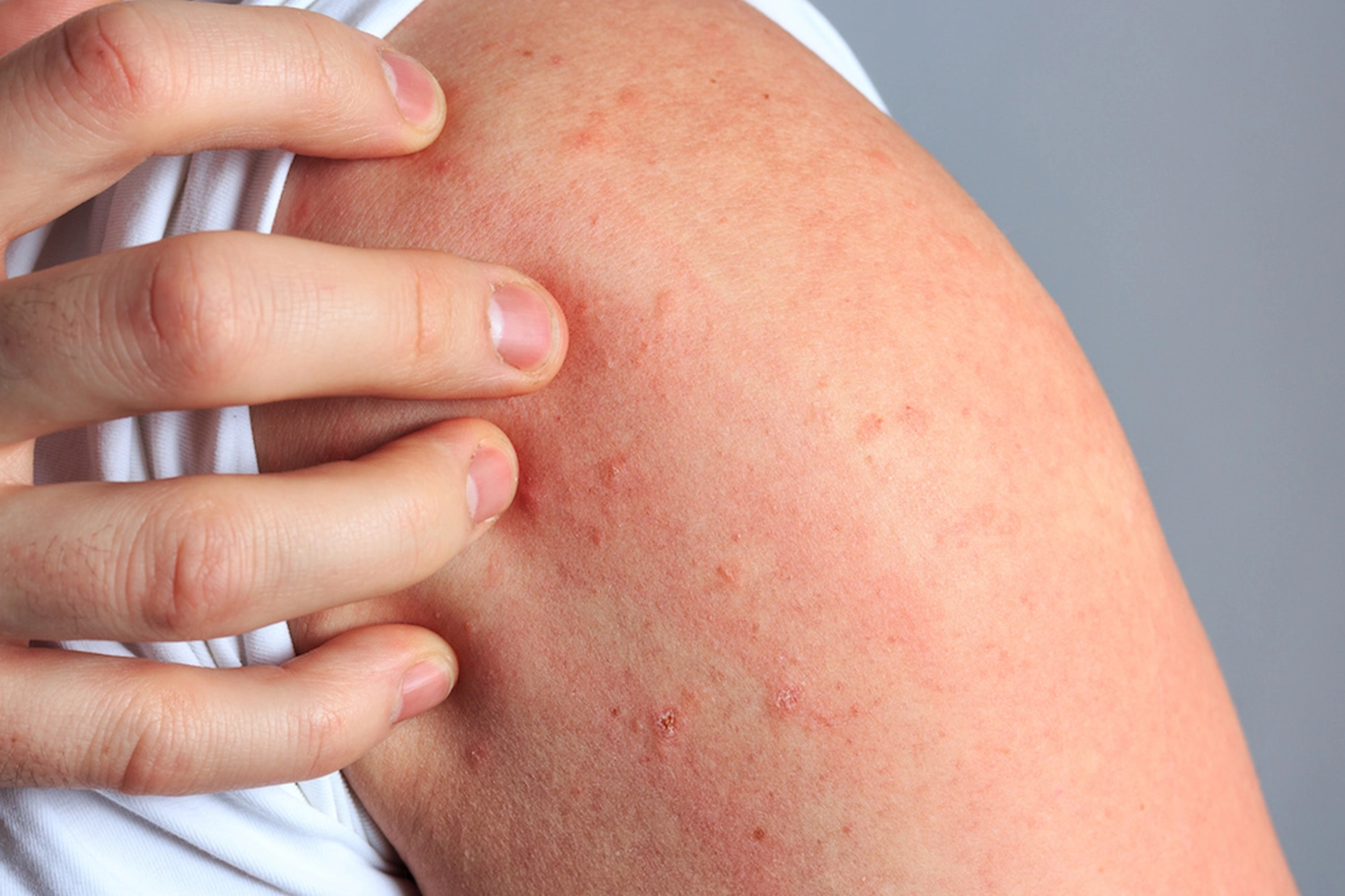
NEUROSCIENCE
Parkinson's Disease: An Introductory Guide to Symptoms and Diagnosis
-
Rahul Priydarss
Learn about Parkinson’s disease symptoms and diagnosis in this comprehensive guide. Discover the basics of Parkinson’s disease, including its prevalence, causes, and risk factors. Explore treatment options and find out about current research and future prospects. Raise awareness and advocate for Parkinson’s disease to support those affected by this neurological disorder.
Introduction to Parkinson’s Disease:
Individuals with Parkinson’s disease experience a range of motor symptoms, including tremors, rigidity, bradykinesia (slowness of movement), and impaired balance. These symptoms often worsen over time and can significantly impact daily activities and quality of life.
Understanding the Basics of Parkinson’s Disease:
Parkinson’s disease is a chronic and progressive neurological disorder that primarily affects movement. It is characterized by the degeneration of dopamine-producing neurons in a region of the brain called the substantia nigra. Dopamine is a neurotransmitter that plays a crucial role in regulating movement, so its deficiency leads to the motor symptoms associated with Parkinson’s disease.
The hallmark motor symptoms of Parkinson’s disease include tremors, stiffness, bradykinesia (slowness of movement), and impaired balance and coordination. These symptoms typically develop gradually over time and worsen as the disease progresses. Additionally, non-motor symptoms such as cognitive impairment, mood disorders, sleep disturbances, and autonomic dysfunction may also occur, further impacting the quality of life of affected individuals.

Table of Contents
Prevalence and Significance of Parkinson’s disease:
Parkinson’s disease is the second most common neurodegenerative disorder after Alzheimer’s disease, affecting millions of people worldwide. While it is more commonly diagnosed in individuals over the age of 60, it can also affect younger individuals, although this is less common.
The significance of Parkinson’s disease extends beyond its impact on movement. It poses significant challenges to daily functioning, leading to disabilities and impairments in various aspects of life. The physical, emotional, and socioeconomic burdens associated with Parkinson’s disease affect not only individuals diagnosed with the condition but also their families and caregivers.
Causes and Risk Factors of Parkinson’s Disease:
Understanding the various causes and risk factors associated with Parkinson’s disease is crucial for identifying individuals at higher risk and implementing preventive strategies.
1. Genetic Factors: While most cases of Parkinson’s disease occur sporadically, genetic factors can play a role in increasing susceptibility to the disease. Mutations in specific genes such as SNCA, LRRK2, PARK2, and PINK1 have been linked to familial forms of Parkinson’s disease, where the condition runs in families. Variations in other genes may also contribute to an individual’s risk of developing Parkinson’s disease.
2. Environmental Factors: Exposure to certain environmental toxins and chemicals may increase the risk of developing Parkinson’s disease. Pesticides, herbicides, and industrial chemicals like solvents have been implicated as potential environmental risk factors. Other factors such as head injuries, rural living, and exposure to well water or metals like manganese and iron have also been associated with an increased risk of Parkinson’s disease.
3. Age: Advanced age is one of the most significant risk factors for Parkinson’s disease. While the condition can affect individuals of any age, the risk increases with age, with most cases diagnosed in individuals over the age of 60.
4. Sex: Parkinson’s disease is slightly more common in men than in women, although the reasons for this difference are not fully understood.
5. Family History: Having a family history of Parkinson’s disease increases the risk of developing the condition. Individuals with a first-degree relative (parent or sibling) with Parkinson’s disease have a slightly higher risk compared to the general population.
6. Ethnicity: Some studies suggest that certain ethnic groups may have a higher prevalence of Parkinson’s disease, though more research is needed to understand these differences fully.
7. Lifestyle Factors: Certain lifestyle factors may influence the risk of developing Parkinson’s disease. Regular physical activity, a healthy diet rich in antioxidants, and avoiding smoking and excessive alcohol consumption may help reduce the risk.
Symptoms of Parkinson’s Disease:
Parkinson’s disease manifests through a variety of motor and non-motor symptoms, which can vary in severity and progression among individuals. Understanding these symptoms is crucial for early detection and management of the condition. Below are some common symptoms associated with Parkinson’s disease.
1- Motor Symptoms:
- Tremor: Involuntary shaking or trembling, often starting in one hand and spreading to other limbs or body parts.
- Bradykinesia (Slowness of Movement): Difficulty initiating movement, slowed movement, and decreased ability to perform repetitive movements quickly.
- Muscle Rigidity: Stiffness or inflexibility in muscles, which can cause discomfort, pain, or limited range of motion.
- Postural Instability: Impaired balance and coordination, leading to difficulty maintaining an upright posture and increased risk of falls.
2. Non-Motor Symptoms:
- Cognitive Impairment: Problems with memory, concentration, and executive function, which may progress to dementia in later stages of the disease.
- Depression and Anxiety: Mood disorders characterized by persistent feelings of sadness, anxiety, or apathy.
- Sleep Disturbances: Difficulty falling asleep or staying asleep, restless legs syndrome, vivid dreams, and nighttime movements.
- Autonomic Dysfunction: Dysfunction of the autonomic nervous system, leading to symptoms such as constipation, urinary problems, excessive sweating, and orthostatic hypotension (low blood pressure upon standing).
- Speech and Swallowing Difficulties: Changes in speech patterns, including soft or slurred speech, and difficulty swallowing (dysphagia).
- Loss of Smell (Hyposmia): Reduced ability to detect or identify odors, often occurring years before the onset of motor symptoms.
- Pain and Sensory Symptoms: Musculoskeletal pain, tingling or numbness in limbs, and sensory disturbances.
- Fatigue: Persistent feelings of tiredness or exhaustion, which can significantly impact daily functioning.
- Psychiatric Symptoms: Hallucinations, delusions, and impulse control disorders, particularly in individuals taking dopamine replacement therapy.
3. Fluctuations and Dyskinesias:
- Motor Fluctuations: Periods of good mobility (ON periods) alternating with periods of poor mobility (OFF periods), often related to medication dosing.
- Dyskinesias: Involuntary, abnormal movements that can occur as a side effect of long-term dopaminergic therapy, often appearing as chorea or dystonia.
Diagnosis of Parkinson’s Disease:
Diagnosing Parkinson’s disease typically involves a comprehensive evaluation by a healthcare professional, often a neurologist specializing in movement disorders. While there is no single test to definitively diagnose Parkinson’s disease, the diagnosis is based on a combination of medical history, physical examination, and assessment of symptoms. The following steps are commonly involved in the diagnostic process.
1. Medical History: The healthcare provider will gather information about the individual’s medical history, including any symptoms they have been experiencing, the duration and progression of symptoms, family history of Parkinson’s disease or other movement disorders, and any previous exposure to potential risk factors.
2. Physical Examination: A thorough physical examination is conducted to assess motor symptoms associated with Parkinson’s disease. This may include evaluating posture, gait, muscle rigidity, tremors, and overall mobility. Observation of resting tremors, bradykinesia (slowness of movement), and other characteristic motor features helps in the diagnosis.
3. Assessment of Symptoms: The healthcare provider will evaluate both motor and non-motor symptoms associated with Parkinson’s disease. This may include cognitive function, mood disturbances, sleep patterns, and autonomic dysfunction. Standardized assessment scales, such as the Unified Parkinson’s Disease Rating Scale (UPDRS), may be used to quantify symptom severity and track disease progression.
4. Response to Medication: Parkinson’s disease is typically characterized by a positive response to dopaminergic medications. Therefore, a trial of dopaminergic therapy may be initiated to assess the individual’s response. Improvement in motor symptoms following medication administration can support the diagnosis of Parkinson’s disease.
5. Differential Diagnosis: Parkinson’s disease shares symptoms with other movement disorders and neurodegenerative conditions. To rule out other potential causes of symptoms, the healthcare provider may perform additional tests such as blood tests, imaging studies (e.g., MRI or CT scans), or specialized neurological assessments.
6. Consultation with Specialists: In some cases, referral to specialists such as neurologists, movement disorder specialists, or neuropsychologists may be necessary for further evaluation and confirmation of the diagnosis.
7. Long-term Monitoring: Once diagnosed, individuals with Parkinson’s disease require long-term monitoring and management. Regular follow-up appointments with healthcare providers are essential to assess symptom progression, adjust treatment strategies, and address any emerging complications.

Treatment Options for Parkinson’s Disease:
Parkinson’s disease is a chronic condition for which there is currently no cure. However, several treatment options are available to help manage symptoms, improve quality of life, and slow disease progression. The choice of treatment depends on the individual’s symptoms, overall health, and stage of the disease. Common treatment approaches include.
1. Medications:
Levodopa (L-dopa): Levodopa is the most effective medication for managing motor symptoms of Parkinson’s disease. It is converted into dopamine in the brain, replenishing dopamine levels and alleviating motor symptoms such as tremors, rigidity, and bradykinesia.
Dopamine Agonists: These medications mimic the effects of dopamine in the brain and are often used in combination with levodopa or as initial therapy in younger patients. Examples include pramipexole and ropinirole.
MAO-B Inhibitors: Monoamine oxidase type B (MAO-B) inhibitors, such as selegiline and rasagiline, help increase dopamine levels in the brain by inhibiting the enzyme that breaks down dopamine.
COMT Inhibitors: Catechol-O-methyltransferase (COMT) inhibitors, such as entacapone and tolcapone, prolong the effects of levodopa by inhibiting its breakdown in the body.
2. Deep Brain Stimulation (DBS):
Deep brain stimulation involves surgically implanting electrodes into specific areas of the brain, usually the subthalamic nucleus or globus pallidus. These electrodes deliver electrical impulses to modulate abnormal brain activity, reducing motor symptoms of Parkinson’s disease. DBS is often considered for individuals with advanced Parkinson’s disease who experience motor fluctuations or medication-related side effects.
3. Physical Therapy:
Physical therapy focuses on improving mobility, flexibility, balance, and muscle strength in individuals with Parkinson’s disease. Exercise programs tailored to the individual’s needs can help alleviate symptoms, maintain functional independence, and enhance overall well-being.
4. Occupational Therapy:
Occupational therapy aims to assist individuals with Parkinson’s disease in performing daily activities more effectively and independently. It focuses on adaptive techniques, environmental modifications, and assistive devices to address challenges related to activities of daily living.
5. Speech Therapy:
Speech therapy helps individuals with Parkinson’s disease improve speech and swallowing difficulties, which can occur as the disease progresses. Techniques may include exercises to strengthen facial muscles, improve vocal quality, and enhance swallowing function.
6. Lifestyle Modifications:
Adopting a healthy lifestyle can complement medical treatment for Parkinson’s disease. This may include regular exercise, a balanced diet rich in antioxidants and fiber, adequate hydration, stress management techniques, and sufficient sleep.
Impact of Parkinson’s Disease on Daily Life:
Parkinson’s disease can have a significant impact on various aspects of daily life, affecting both physical and mental functioning. The following are common ways in which Parkinson’s disease may influence daily activities.
1. Mobility and Movement: Parkinson’s disease often causes motor symptoms such as tremors, stiffness, bradykinesia (slowness of movement), and impaired balance. These symptoms can make simple tasks like walking, getting up from a chair, or turning in bed challenging and may lead to increased risk of falls.
2. Activities of Daily Living (ADLs): Basic activities of daily living, such as dressing, bathing, grooming, and eating, may become more difficult due to motor impairment and decreased dexterity. Individuals with Parkinson’s disease may require assistance or adaptations to perform these tasks independently.
3. Speech and Swallowing: Parkinson’s disease can affect the muscles involved in speech production and swallowing, leading to speech difficulties (dysarthria) and swallowing problems (dysphagia). Communication and eating may become more challenging, impacting social interactions and nutrition.
4. Cognitive Function: Some individuals with Parkinson’s disease may experience cognitive changes, including difficulties with memory, attention, and executive function. These cognitive impairments can affect decision-making, problem-solving, and overall mental processing, impacting daily tasks and activities.
5. Emotional Well-being: Parkinson’s disease can have emotional and psychological effects, including depression, anxiety, stress, and frustration. Coping with the challenges of the disease, adjusting to limitations, and dealing with changes in independence and self-image can take a toll on emotional well-being.
6. Social Participation: Parkinson’s disease may affect an individual’s ability to engage in social activities, hobbies, and leisure pursuits. Reduced mobility, speech difficulties, and cognitive changes may limit participation in social events and interactions, leading to feelings of isolation and loneliness.
7. Caregiver Burden: Parkinson’s disease not only impacts individuals diagnosed with the condition but also places significant demands on caregivers. Caregivers may need to provide physical assistance, emotional support, and supervision, leading to increased stress, fatigue, and disruptions to their own daily routines.
Current Research and Future Prospects for Parkinson’s Disease:
Parkinson’s research is a thriving field with both ongoing efforts to improve current treatments and exciting possibilities for the future. Here’s a glimpse into what researchers are focusing on.
Understanding the Cause:
Alpha-synuclein: A protein believed to play a key role in the death of dopamine-producing neurons. Researchers are trying to unravel its normal function and how abnormal clumps contribute to the disease.
Genetics: While most cases have unknown causes, a small percentage is linked to genes. Identifying these mutations may provide new therapeutic targets.
Improved Treatments:
Deep Brain Stimulation (DBS): This existing therapy is being refined with directional leads for better targeting and exploring its potential as a bridge for future therapies like gene therapy.
Neuroprotective drugs: These medications aim to slow or prevent the degeneration of dopamine neurons. Several promising molecules are undergoing investigation.
Future Possibilities:
Stem Cell Therapy: Replacing lost dopamine neurons with healthy ones derived from stem cells holds promise, but researchers are working on creating the ideal cells for transplant.
Gene Therapy: This approach targets the genes responsible for Parkinson’s to potentially prevent or slow its progression. Studies are exploring its use in combination with DBS.
Overall, the future of Parkinson’s research is brimming with hope:
Researchers are making significant strides in understanding the disease and developing better treatments. While there’s no cure yet, the coming years might see breakthroughs in neuroprotective therapies, gene editing, and even stem cell transplantation.
Awareness and Advocacy for Parkinson’s Disease:
Raising awareness and advocating for Parkinson’s disease is essential to increase understanding of the condition, improve access to care, support research efforts, and enhance the quality of life for individuals living with Parkinson’s disease and their families. Here are some key strategies for awareness and advocacy.
1. Education and Outreach: Providing accurate and up-to-date information about Parkinson’s disease to the general public, healthcare professionals, policymakers, and the media. Organizing educational events, seminars, webinars, and support groups to promote awareness, share resources, and foster community engagement.
2. Public Policy and Funding: Advocating for policies and legislation that support research funding, access to healthcare services, and quality of care for individuals with Parkinson’s disease. Engaging with government agencies, advocacy organizations, and policymakers to prioritize Parkinson’s disease as a public health issue and allocate resources accordingly.
3. Community Support and Empowerment: Building a supportive and inclusive community for individuals affected by Parkinson’s disease, their caregivers, and loved ones. Providing emotional support, practical assistance, and resources to help navigate the challenges of living with Parkinson’s disease and promote resilience and empowerment.
4. Research Funding and Collaboration: Supporting and participating in fundraising efforts to advance Parkinson’s disease research and drug development. Encouraging collaboration among researchers, healthcare providers, pharmaceutical companies, and advocacy organizations to accelerate scientific discoveries and improve treatment options.
5. Public Awareness Campaigns: Launching public awareness campaigns to dispel myths, reduce stigma, and increase understanding of Parkinson’s disease. Using various communication channels, including social media, websites, print materials, and community events, to reach diverse audiences and raise awareness about the impact of Parkinson’s disease.
6. Advocacy for Accessible Care: Advocating for equitable access to healthcare services, including specialized treatment centers, multidisciplinary care teams, and supportive services for individuals with Parkinson’s disease. Addressing barriers to access such as geographic disparities, financial constraints, and lack of trained healthcare professionals.
7. Empowering Patient Voices: Empowering individuals living with Parkinson’s disease and their caregivers to advocate for their needs, rights, and preferences. Providing opportunities for patient advocacy training, leadership development, and involvement in decision-making processes at local, national, and international levels.
8. Global Collaboration: Fostering collaboration and knowledge-sharing among advocacy organizations, healthcare providers, researchers, and policymakers at the global level to address common challenges and promote best practices in Parkinson’s disease care and advocacy.
FAQs about Parkinson’s disease?:
A1: Parkinson’s disease is believed to result from a combination of genetic and environmental factors, although the exact cause remains unknown.
A2: While genetics can play a role in Parkinson’s disease, it is typically not directly inherited in a predictable manner.
A3: Early signs of Parkinson’s disease may include tremors, slowness of movement, stiffness, and balance problems.
A4: Diagnosis of Parkinson’s disease is usually based on a thorough medical history, neurological examination, and assessment of symptoms. Additional tests, such as imaging studies, may be performed to confirm the diagnosis.
A5: Treatment for Parkinson’s disease may include medications, deep brain stimulation (DBS), physical therapy, and lifestyle modifications aimed at managing symptoms and improving quality of life.
-Please remember, to always consult with healthcare professionals or Doctors for personalized advice related to medical conditions.
Conclusion:
Parkinson’s disease is a complex and challenging condition that affects millions of individuals worldwide. While there is currently no cure for Parkinson’s disease, significant progress has been made in understanding the underlying mechanisms and developing effective treatments to manage symptoms and improve quality of life. By raising awareness, promoting research, and providing support and advocacy, we can work towards a future where Parkinson’s disease no longer poses a significant burden on individuals and families.




